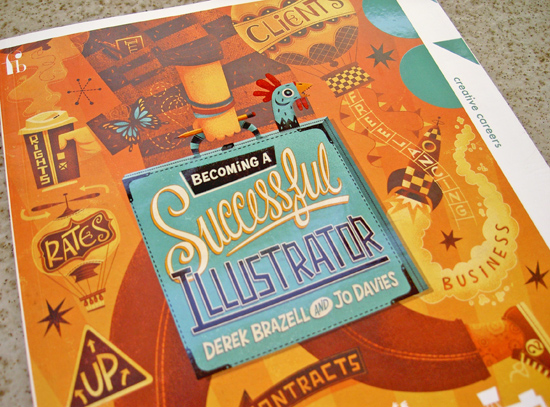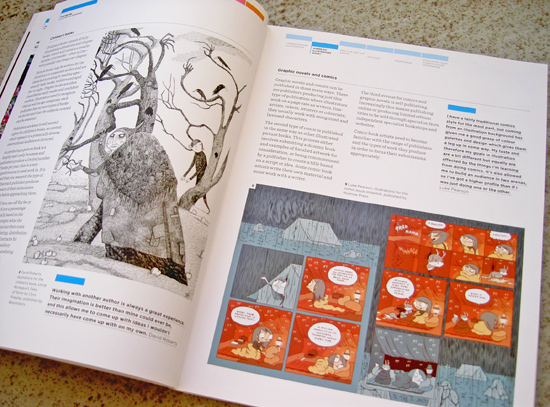Becoming a Successful Illustrator – Book Review
Becoming a Successful Illustrator
By Derek Brazell and Jo Davies
Published by Bloomsbury ISBN: 9782940447589
Review by Adam D’Costa
Taking the leap into the professional world of illustration can seem an exciting yet daunting prospect. Becoming a Successful Illustrator focuses on the idea fact that creative talent needs to be backed up with business skills. The books covers the many aspects that a professional illustrator needs to think about in order to make a living off creating images. By exploring the key areas of the illustration business such as self-promotion, securing clients, contracts and finances this book concisely breaks the information down into clear sections and serves as an invaluable guide to good business practice in the illustration world.
Steve Simpson’s great cover illustration is a good sign of things to come. Alongside the information inside, the book is full of amazing and well chosen illustrations from the likes of Ellen Weinstein, Mark Smith and Anna Steinberg, highlighting the broad range of areas that illustration can be applied to, and how diverse the industry is The page layout is very clean and the book is very easy to navigate and find what you are looking for. The book is split into six chapters. The first explores the different fields that an illustrator can work within, and asks the reader to think about where their work fits in the commercial environment, what their USP is and who will buy their work.
…we are all unique, but replaceable, and, no matter how good we can get, there are scores of others ready to wear our shoes.â€
– Paolo Rui, pg 39.
The book goes deeper by providing spotlights on illustrators and commissioners of illustration which backs up the information being given. For example, there is one case study on Marcus Chin and how he works specifically for an editorial assignment, and then there is one on Ben Newman and how he has managed to apply his work to a variety of formats.
It then takes you through how to conduct yourself as a professional and to think broadly about where your work can fit not relying on one field such as editorial or one client. One of the great features of this books is that it doesn’t just approach subjects from the illustrator’s point of view. In the section about self-promotion, there are a couple of spotlights on professionals who commission illustrators. They discuss how they like to be approached when to do it, and to think about what best shows off your work and who you are. A running theme through this book is having a sense of direction to think about where you want to take your work.
‘Business and creativity are two sides of one coin to an illustrator really’.
– Stephen Collins, pg 140.
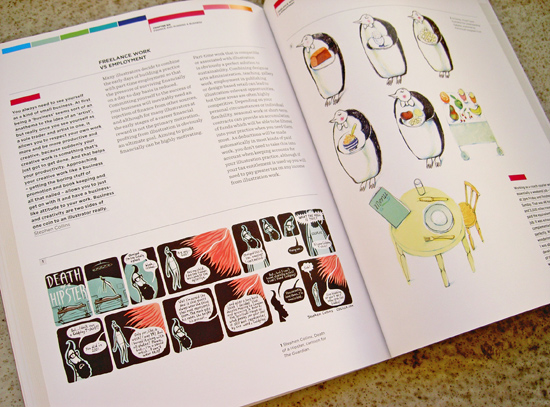
The book goes on to discuss securing work, agents, and how to handle contracts which is to read them and stand up for yourself if you disagree with anything on them.
At the end of the book there are activities to really help the reader focus on setting themselves up as an illustrator. It poses questions as to whether your work is suitable for the type of clients you want to work for, exercises on costing and finances. It’s great how this book goes into specifics there are sample terms and conditions and even a sample invoice, and small detail but so useful if you’ve never made one before.
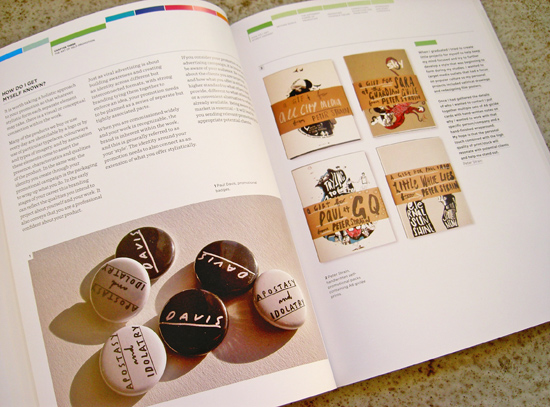
There is a strong emphasis on the idea of being professional and how this can have an effect, not only on your own practice but on how other people and potential clients view you. It’s not solely about the work you produce. The book focuses on the individual but also about having responsibility for the industry as a whole every time you stand up for your rights you are standing up for illustrators rights.
A really useful book which gives you a sense of control over what the steps you need to take and think about in order to start making a living doing the thing you love. Plus it has lots of illustrations to look at.
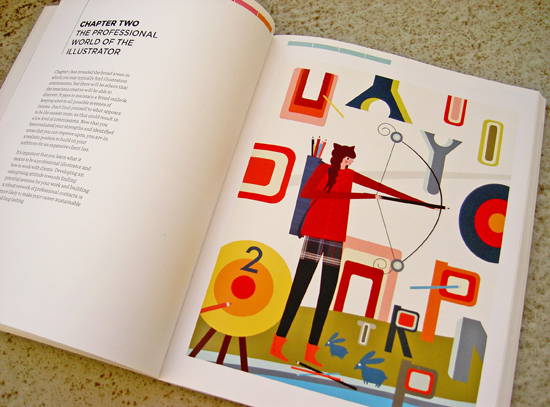
Back to News Page

